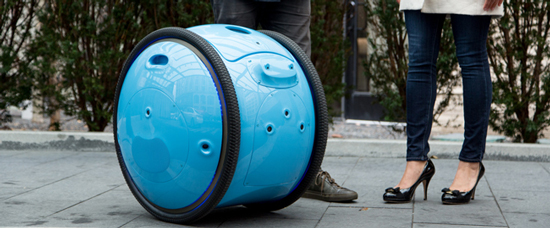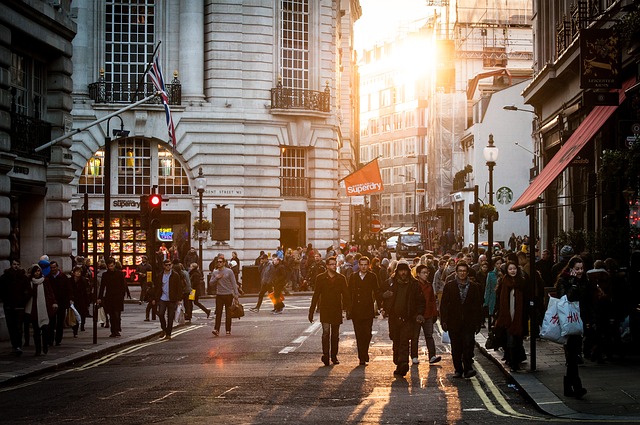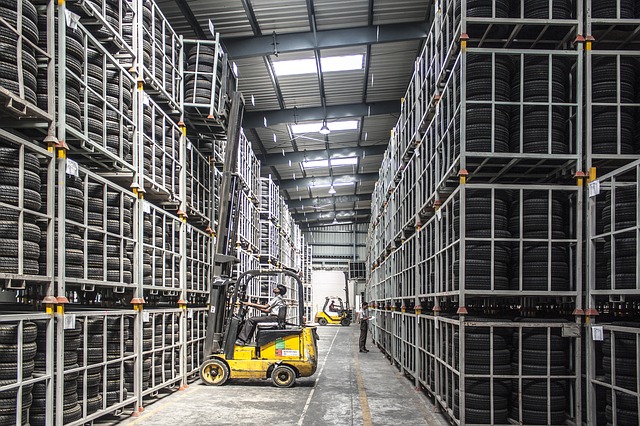
Your new friend the cargo-carrying droid
Technology and the Yellow Pages are about to meet. Anew generation of smart droids is preparing to revolutionise the delivery of goods and services between local businesses and local customers using the pavements, roads and skies near you.
Digitally door-to-door
Imagine waiting at a pedestrian crossing for the green lights to show with a friendly robot as company. Strange today perhaps, but almost certainly commonplace tomorrow.
Goods-carrying droids weaving their way safely, intelligently and unobtrusively along local highways and by-ways could soon reset the working relationship between ordinary high street businesses and their local customers.
Telephone for a takeaway in the near future and expect it to be delivered by a low-cost and reliable droid that never gets lost. No tip required thank you.

Your own R2D2 could come a-calling
Gita is one such pavement droid. Described by Piaggio, the Italian maker of famous Vesper scooters, as intelligent and nimble, Gita's 18kg drum-shaped cargo container rolls forward stably on two large-diameter wheels running around its edges.
It currently follows signals transmitted from its owner's waist-belt but in the future could be allowed out on its own.
Equipped with sensors and capable of hitting 22mph, or a more leisurely 3mph for eight hours, Gita weaves very politely between other pavement users.
More than a dozen under test already carry tools, help transit passengers around airports and make deliveries in the US. Eventually, Gita will travel on its own guided by cameras and ultrasonic sensors.
Starship droids
Gita is not alone. Starship Technologies is an Estonian company started by two of Skype's funders. It is developing a six-wheel, 10kg, 6kph machine that uses cameras and sensors to navigate its own way around - a remote operator takes control at busy crossings.
Again, the company says dozens of its un-named units are delivering groceries, goods and takeaway meals in European cities, plus Washington DC
Pavement fellow-travellers
Not far into the future, Starship Technologies foresee 'fleets' of well-behaved robot droids supervised remotely by a single remote operator threading their way to shops, offices, businesses premises and factories near you as part of daily life.
From a safety and cultural perspective, Starship adds that its ground-based robots have already met millions of people and travelled tens of thousands of kilometres with no accidents.

Rites of passage
More development work is needed, including legal codes and rights of way at crossings. What happens at traffic lights or complex junctions for example?
According to one expert, monitoring the personal habits of walkers, joggers, pram-users, plus street signs, allows robots to learn 'pedestrian culture'.
In fact, the lightweight and slow speeds of pavement-bound droids seem to raise no significant safety concerns. Many cities welcome robots as a cure for pollution, congestion and noise.
Delivery drones
Flying drones have a mixed reputation, with issues of privacy and safety still to be resolved. However, their shear flexibility is winning out to the point where an 'eye-in-the-sky' could become an indispensible business tool for neighbourhood planners, builders, architects and companies that rely heavily on topographical information such as utilities and landscape designers
Other business drones
On major off-road building and construction sites, drones now routinely survey work progress and health & safety conditions; they also enter confined and dangerous spaces where humans could be at risk.
However, the growth of specialist operators is putting cost-effective drone services with the reach of small companies that may, for example, need to survey roof damage, or take before and after projects shots for their clients. The alternative could be to buy in commercial aerial data.
Drones work underground too. In February 2017, Anglian Water floating drones with laser, sonar and high definition CCTV created 3D silt models for 2.5 miles (4km) of Milton Keynes sewers.

Flying warehouses
Amazon has even designed a futuristic flying warehouse serviced by shuttle drones that could in theory be manoeuvred to points of high commercial demand, such as sports events and festivals.
Amazon has filed a patent. It recognises the competitive potential. Franchise opportunities for small firms perhaps?
In real time, December 2016 saw Amazon Air make its first commercial drone delivery.
A drone flying autonomously guided by GPS, and able to carry a 2.7kg (5lbs) payload, flew at a height of 122m (400ft) to reach its destination in Cambridge 13 minutes after the order was first placed.
Better road use
When it comes to heavyweight transport, technology is already helping to make better use of limited road space, both for driverless and driver-driven vehicles.
In his 2016 Autumn Statement, the Chancellor of the Exchequer announced £390 million to boost development of autonomous and low-carbon cars.
Work is underway on pro-active traffic control systems using real time data to stop vehicles from bunching. Some marques of cars already 'talk' to each other to avoid forming jams.
For the first time in 130 years, Sainsbury's trialled home delivery systems by bike in London recently, a service first launched in 1882.
However, ordinary business can expect to see smart transport solutions that go far beyond a fit person on a bike weaving in and out of slow-moving traffic!

